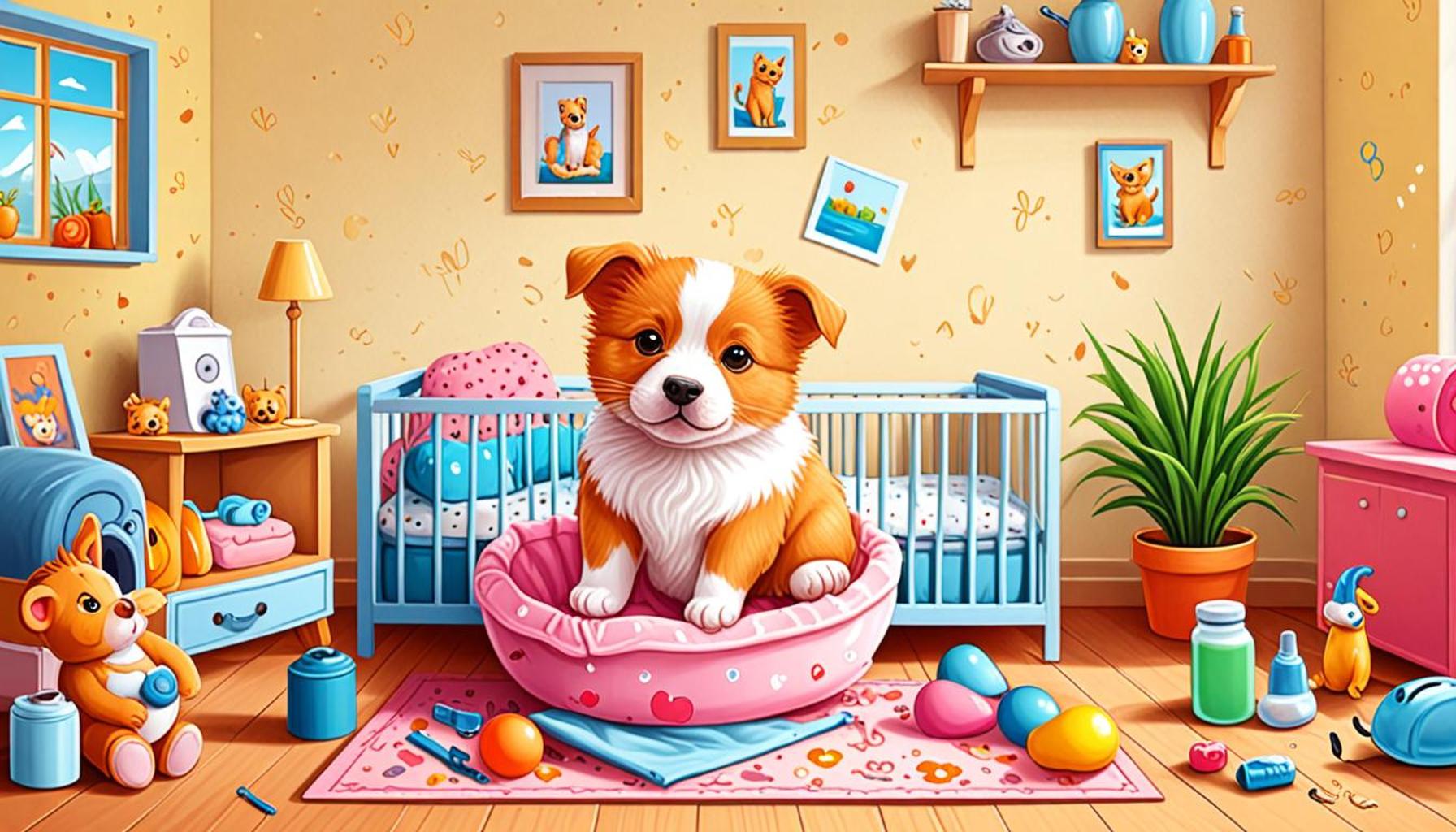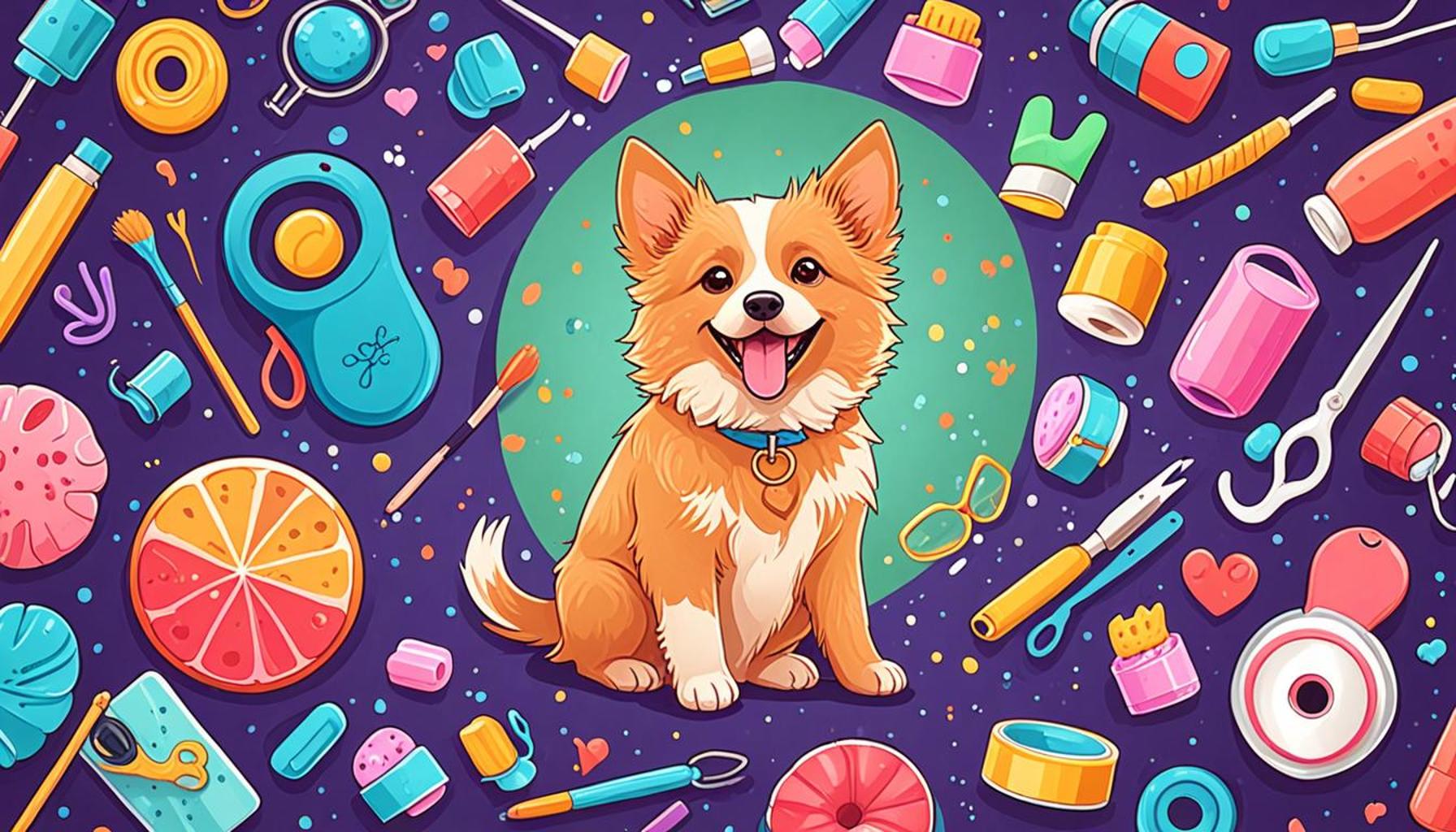How to Prepare Your Pet for the Arrival of a Baby at Home

Welcoming a New Addition to Your Family
The excitement surrounding the arrival of a new baby can be both exhilarating and nerve-wracking, especially when it comes to your furry companions. Pets, much like children, thrive on routine and stability. When faced with the significant change that a new baby brings, it is vital to prepare your pets for the adjustment. This proactive approach not only eases their anxiety but also fosters a safe and lovely environment for your expanding family.
Understanding the Importance of Preparation
Preparation plays a crucial role in ensuring that your pet adapts well to the new family dynamic. Pets are highly attuned to their surroundings, making them sensitive to changes that disrupt their established routine. Here’s why putting in the effort to prepare is essential:
- Minimizes Anxiety: Animals often experience stress when confronted with sudden changes. By familiarizing your pet with the sights and sounds associated with a baby, you can significantly reduce their anxiety levels during the transition.
- Promotes Safety: Ensuring your pet is comfortable and acclimated to the baby is critical for the safety of both your child and your pet. Proper introductions can prevent startling situations and potential mishaps.
- Encourages Bonding: By facilitating positive interactions from the outset, you can nurture a bond that develops into lifelong companionship between your child and pet.
Key Steps for a Smooth Transition
Preparing your pet for a new baby involves more than just clearing space in your home; it calls for a series of thoughtful steps to ensure your furry friend feels secure and included. Here are some vital considerations:
- Vet Visits: A health check-up can help ensure your pet is in excellent condition before the baby arrives. It’s also the ideal time to discuss any behavioral concerns with your veterinarian, who can provide tailored advice.
- Training and Behavior Management: Reinforcing basic commands and training your pet in manageable behaviors can result in a calmer and more controlled demeanor. Simple techniques like using positive reinforcement can aid in this process.
- Gradual Introductions: Begin by introducing your pet to baby sounds, like crying or cooing, as well as common baby items such as toys, clothing, and equipment. This gradual desensitization allows your pet to adjust to novel stimuli without overwhelming them.
Incorporating these preparatory measures helps create a smoother transition for everyone involved. It sets the stage for a loving and harmonious home where your baby can grow up with a devoted four-legged friend. Remember that patience is key, as both your baby and your pet will need time to adapt to one another’s presence. With the right approach, this can be an enriching experience that enhances family life for years to come.
DISCOVER MORE: Click here to learn about innovative therapies in animal care
Preparing Your Pet: The Foundation for a Smooth Transition
As a new parent, the arrival of a baby is undoubtedly a time filled with joy, anticipation, and preparation. However, it is equally essential to ensure that your beloved pets are ready for this significant shift in the family dynamic. Preparation is not merely a formality; it is a critical foundation that fosters a harmonious environment for both your new baby and your pet.
The Role of Familiarity
One of the most effective ways to ease your pet’s transition is by creating a sense of familiarity with what is to come. Sensory changes, such as new sounds and smells associated with a baby, can be unsettling for pets. To minimize stress, consider the following steps:
- Introduce Baby Sounds: Play recordings of baby sounds, such as crying or cooing, to desensitize your pet gradually. By incorporating these new sounds into your daily routine before the baby arrives, you can help reduce any anxiety your pet may experience.
- Review Baby Gear: Allow your pet to investigate baby items like strollers, cribs, and toys. This exposure helps your pet familiarize itself with new objects and reduces the possibility of fear when the baby finally arrives.
Establishing Boundaries
As you prepare your pet for the new addition to your family, it is crucial to establish boundaries. Just as children learn dos and don’ts, pets also thrive with a clear understanding of their space and the rules of the household. Here are some strategies to implement:
- Designate Safe Spaces: Create pet-free zones within your home, especially in areas where the baby will spend most of their time. This will help your pet adjust to their new role while ensuring safety for both the baby and your furry friend.
- Reinforce Commands: Now is the time to adhere to basic commands like “sit,” “stay,” and “come.” Consistent training will ensure that your pet remains obedient and calm in the presence of the baby.
It is also crucial to recognize how the presence of a newborn can affect your pet’s routine. Pets thrive on consistency; hence, maintaining a schedule for feeding, walks, and playtime will contribute significantly to their sense of stability during this transitional phase.
Consulting Professionals
If concerns arise regarding your pet’s behavior or adjustment, don’t hesitate to seek professional assistance. A visit to the veterinarian can provide valuable insights into your pet’s health and behavior, while a dog trainer or animal behaviorist can offer specialized guidance to ease the transition. Investing time in these consultations can prevent issues and create an atmosphere where both your pet and baby can coexist harmoniously.
As you embark upon this exciting new chapter, remember that your pet’s sense of belonging is vital. By embracing these preparation strategies, you will not only help your furry companion adjust but also pave the way for a loving relationship between your child and pet that can flourish over the years. A little proactive effort will go a long way in ensuring a smoother transition for the entire family.
Understanding Your Pet’s Behavior
When preparing for a new baby at home, it’s essential to assess and understand your pet’s behavior. Every pet reacts differently to changes in their environment, especially with the introduction of a new family member. Observing their reactions to new sounds, smells, and routines can provide valuable insights into how they might adapt to a baby. For instance, dogs may exhibit excitement, anxiety, or even jealousy, while cats might retreat or become more affectionate.
Establishing a Safe Space
Creating a safe and comfortable space for your pet is crucial. This zone should be away from the nursery and equipped with their bed, toys, and access to fresh water. It’s paramount to ensure that your pet feels secure and has a designated area where they can retreat when the baby’s noise or activity becomes overwhelming. This strategy promotes a peaceful coexistence and helps alleviate stress for both your pet and the baby.
Training and Introductions
Before the baby arrives, it’s pivotal to reinforce good behavior through training. Basic obedience commands, such as sit, stay, and leave it, are vital to set boundaries for your pet. Gradually introducing your pet to baby-related sounds, such as rattles or crying, can desensitize them and lessen potential anxiety. Furthermore, consider using recorded sounds of a baby to familiarize your pet with what to expect.
Consulting a Veterinarian
Lastly, consulting with your veterinarian can provide tailored advice based on your specific pet’s needs. They may recommend dietary adjustments, suggest training resources, or discuss behavioral health practices to ensure a smooth transition. Engaging in conversations about safeguarding your pet’s health during pregnancy will also provide peace of mind, allowing you to focus on preparing for your new arrival.
| Preparation Category | Benefits and Key Features |
|---|---|
| Behavior Assessment | Understanding your pet’s reactions helps to manage anxiety during the transition. |
| Designated Space | A safe space minimizes stress for pets and provides them with a retreat from the baby. |
| Training | Reinforcing good behavior establishes boundaries, leading to a safer environment for the baby. |
| Veterinary Consultation | Expert guidance tailored to your pet’s needs ensures a smoother family transition. |
By taking the time to implement these steps and strategies for your pet’s introduction to the baby, you will create a harmonious environment that benefits the entire family.
DISCOVER: Click here to enhance your pet’s behavior
Integrating Your Pet and Baby: Building a Lifelong Bond
Once you’ve laid the groundwork through preparation, the next step is facilitating a positive introduction between your pet and your new baby. This phase is crucial as it sets the tone for their future relationship. Here are some impactful strategies to help ensure this initial meeting is successful.
Supervised Introductions
The first encounter between your pet and the newborn should be carefully managed. It’s vital to supervise these introductions, particularly if your pet is not used to being around infants. Here are ways to make this process smoother:
- Controlled Environment: Choose a calm, quiet area in your home for the first introduction. Keep the noise level low, as overwhelming stimuli, like unexpected sounds or movements, may frighten your pet.
- Short Interactions: Begin with brief sessions where your pet can observe the baby from a safe distance. Allow your pet time to process this new presence rather than forcing immediate contact.
During this period, body language is essential. Watch for signs of stress from your pet, such as tail tucking or raised fur, and be prepared to take a step back if needed. Gradually, as your pet continues to feel at ease, lengthen the sessions and facilitate closer contact.
Positive Reinforcement
Utilizing positive reinforcement can dramatically aid in solidifying a positive relationship between your baby and pet. Consider leveraging the following techniques:
- Reward Good Behavior: Every time your pet exhibits calm behavior around the baby, offer treats or praise. This will help reinforce the idea that the baby is a source of positive experiences, thereby fostering a bond.
- Encourage Gentle Interaction: As your child grows and begins to explore, teaching gentle interactions with the pet is critical. Show your child the right way to approach and touch the pet, ensuring the latter doesn’t feel threatened.
It’s wise to nurture this bond from an early stage. Studies have shown that children who grow up with pets often experience enhanced empathy and social skills, setting a foundation of understanding and care for animals in their formative years.
Health and Safety Considerations
Prioritizing health and safety is paramount when preparing your pet for the arrival of a baby. Here are several key areas to address:
- Vet Check-Ups: Schedule a thorough veterinary examination for your pet prior to the baby’s arrival. Ensure vaccinations are up-to-date and discuss any behavioral concerns with your vet.
- Parasite Control: Make sure your pet is protected against fleas, ticks, and worms, as these parasites can pose health risks for infants. Understanding preventive measures can enhance overall family well-being.
It may also be beneficial to invest in training your pet in advanced commands, particularly if you foresee challenges. Obedience classes can provide not only a means of skill enhancement but also a chance to socialize your pet in a safe environment.
Gradually Reinforcing Routine Changes
With the arrival of a new baby, your pet’s routine will inevitably evolve. Abrupt changes can lead to confusion and anxiety. To mitigate this, consider these tactics:
- Introduce Gradual Changes: Begin altering your pet’s routine weeks before the baby arrives. Introduce new feeding schedules or decreases in playtime gradually, allowing your pet to adapt. This helps prevent unnecessary stress once the baby is home.
- Incorporate Baby Care into Daily Activities: While caring for your infant, engage with your pet simultaneously. For example, while feeding your baby, ensure your pet is within sight, getting attention, or performing simple tricks for treats.
By making gradual changes, you will reinforce a sense of normalcy for your pet during this major transition. Helping your four-legged family member adjust to a ‘new normal’ creates a supportive environment for everyone in your household.
DIVE DEEPER: Click here to learn about positive reinforcement in dog training
Conclusion: A Harmonious Transition Awaits
Preparing your pet for the arrival of a baby at home is a vital step in ensuring a harmonious family environment. By following the strategies outlined, you can create a smooth transition that embraces both your furry friend and your new infant. Begin by establishing routines and setting boundaries early; this not only helps alleviate anxiety for your pet but also fosters a sense of stability in your household. The importance of supervised introductions cannot be overstated, as these initial encounters are what will shape their relationship going forward.
Utilizing positive reinforcement and gentle training will encourage your pet to form a bond with the baby, marking the beginning of their lifelong companionship. Additionally, prioritizing health and safety through regular vet visits and parasite control will protect both your pet and your child, ensuring a safe environment for play and exploration.
Furthermore, gradually altering your pet’s routine can mitigate stress, allowing them to adapt to the new dynamics of your expanding family. By integrating your pet into daily baby care activities, you reinforce their place in your family while setting a wonderful example for your child about compassion and respect for animals.
As you embark on this new journey, remember that patience and understanding are key. Your efforts to prepare your pet will not only enrich the lives of your child but will also strengthen the bond within your family unit. With the right preparation, it’s not just a transition, but the beginning of a beautifully intertwined life filled with love, laughter, and companionship.


